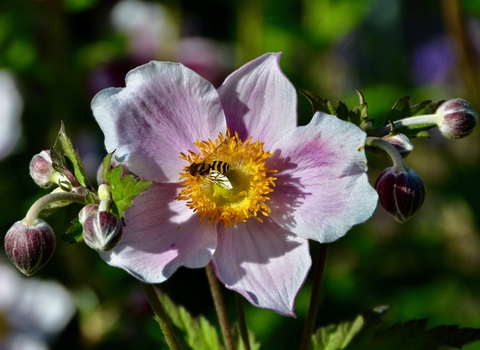
Common banded hoverfly © Linda Seward
Common banded hoverfly
The common banded hoverfly has a fitting name: it is not only one of our most common species, its black body is also covered in yellow bands! It can be seen in many habitats from gardens to woodlands.
Enw gwyddonol
Syrphus ribesiiPryd i'w gweld
March to NovemberSpecies information
Categori
Ystadegau
Length: 1cmCommon.
